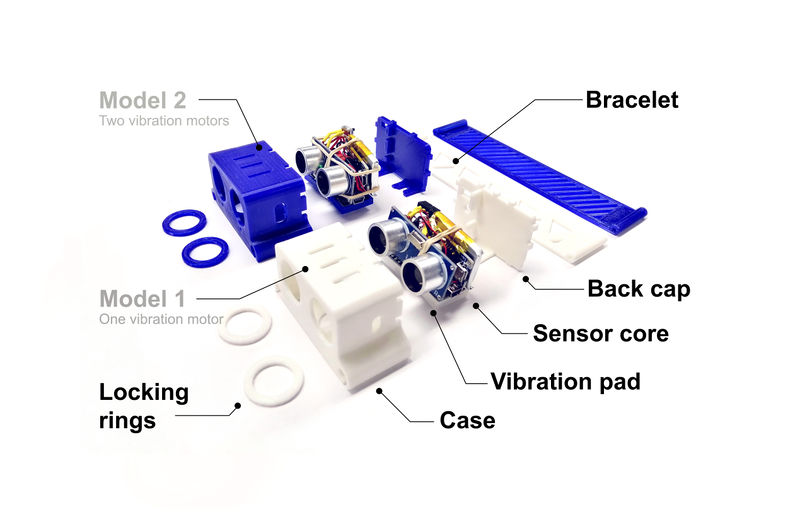Abstract
Nineteen million Americans have significant vision loss. Over 70% are not employed full-time, and more than a quarter live below the poverty line. Globally, there are 36 million blind people, but less than half use white canes or more costly commercial sensory substitutions. The quality of life for visually impaired people is hampered by the resultant lack of independence. To help alleviate this challenge this study reports on the development of a low-cost (<$24), open-source navigational support system to allow people with the lost vision to solve the primary tasks of navigation, orientation, and obstacle detection to ensure their safety and mobility. The proposed system can be largely digitally distributed manufactured. It conveys point-distance information by utilizing the natural active sensing approach and modulates measurements into haptic feedback with various vibration patterns within the distance range of 3 meters. The developed system allows people with the lost vision to solve the primary tasks of navigation, orientation, and obstacle detection (>20 cm stationary and moving up to 0.5 m/s to ensure their safety and mobility. Sighted blindfolded participants successfully demonstrated the device for eight primary everyday navigation and guidance tasks including indoor and outdoor navigation and avoiding collisions with other pedestrians.
Design Process
Several designs have been tested over the past year.
Acknowledgments
Big thanks to Dr. Joshua M. Pearce for advising and motivation, to Shane Oberloier for helpful discussions, and to Apoorv Kulkarni for assistance in conducting experiments.
